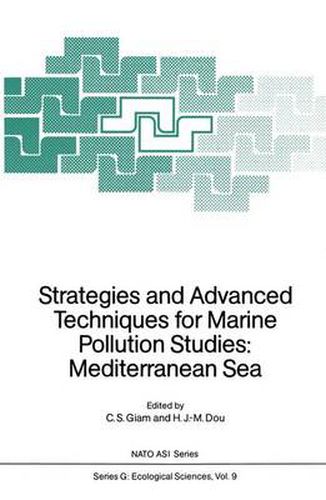Readings Newsletter
Become a Readings Member to make your shopping experience even easier.
Sign in or sign up for free!
You’re not far away from qualifying for FREE standard shipping within Australia
You’ve qualified for FREE standard shipping within Australia
The cart is loading…






This title is printed to order. This book may have been self-published. If so, we cannot guarantee the quality of the content. In the main most books will have gone through the editing process however some may not. We therefore suggest that you be aware of this before ordering this book. If in doubt check either the author or publisher’s details as we are unable to accept any returns unless they are faulty. Please contact us if you have any questions.
A distinction between contamination and pollution is useful when we wish to consider what strategies to adopt in researching the impact of anthropogenic activities on the marine environment. Contamination strictly refers to the chemical burden imposed on the system and is evaluated in terms of the concentrations of chemical compounds in various abiotic (e. g water, suspended particulate matter, sediments) and biotic (plant and animal, pelagic and benthic) components. The concept of pollution, on the other hand, infers an assessment of biological response to the measured levels of contamination. This response may be measured at various levels of biological organisation, from molecular events within the cell to changes in such ecosystem properties as nutrient flux and biological productivity. Such measures of biological response need not infer any value judgements regarding putative damage or disturbance to the natural systems, although the biologist will usually have in mind a reference point of normality with which to compare the measured response; departure from this normality may then provide a quantitiative index of disturbance. The challenge to scientists engaged in research into marine contamination and pollution is to weld the chemical and biological elements together (always with reference also to the physical features of the environment) so as to provide a coherent framework for the quantitative evaluation of environmental response.
$9.00 standard shipping within Australia
FREE standard shipping within Australia for orders over $100.00
Express & International shipping calculated at checkout
This title is printed to order. This book may have been self-published. If so, we cannot guarantee the quality of the content. In the main most books will have gone through the editing process however some may not. We therefore suggest that you be aware of this before ordering this book. If in doubt check either the author or publisher’s details as we are unable to accept any returns unless they are faulty. Please contact us if you have any questions.
A distinction between contamination and pollution is useful when we wish to consider what strategies to adopt in researching the impact of anthropogenic activities on the marine environment. Contamination strictly refers to the chemical burden imposed on the system and is evaluated in terms of the concentrations of chemical compounds in various abiotic (e. g water, suspended particulate matter, sediments) and biotic (plant and animal, pelagic and benthic) components. The concept of pollution, on the other hand, infers an assessment of biological response to the measured levels of contamination. This response may be measured at various levels of biological organisation, from molecular events within the cell to changes in such ecosystem properties as nutrient flux and biological productivity. Such measures of biological response need not infer any value judgements regarding putative damage or disturbance to the natural systems, although the biologist will usually have in mind a reference point of normality with which to compare the measured response; departure from this normality may then provide a quantitiative index of disturbance. The challenge to scientists engaged in research into marine contamination and pollution is to weld the chemical and biological elements together (always with reference also to the physical features of the environment) so as to provide a coherent framework for the quantitative evaluation of environmental response.